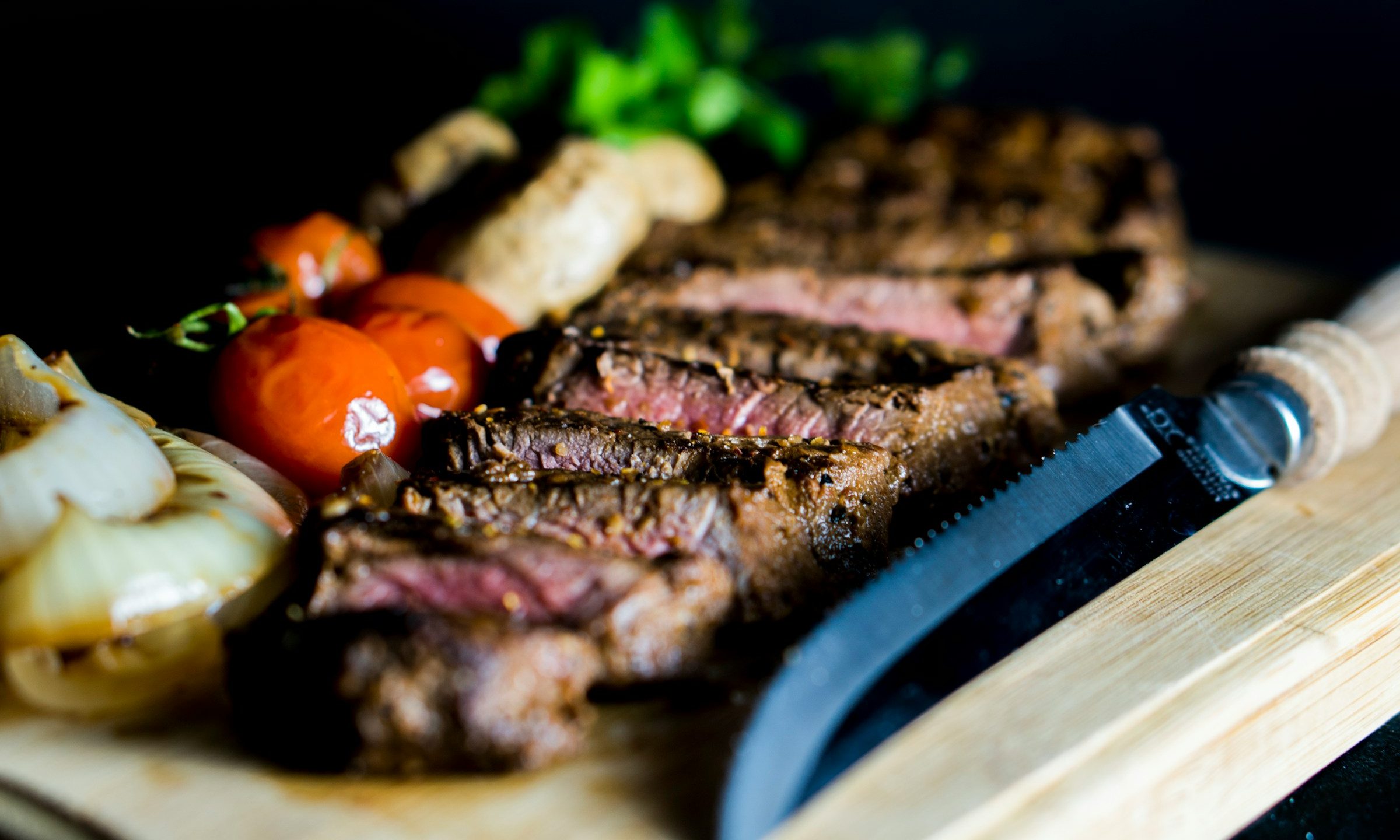Even if you’re something of a steak connoisseur, the hanger steak may just be one cut that you’re unfamiliar with. This delicious steak is tender, juicy, meaty, succulent, often hard to come by, and…cheap? While it doesn’t seem to add up, this little steak is one of the best cuts of beef on the market at one of the lowest prices. So, what’s the deal with hanger steak?
What is hanger steak?

Hanger steak is a particularly long and flat cut of beef, similar in appearance to flank and skirt steak in its oddly oblong shape. Butchered from the belly of the cow, the hanger steak is an extremely flavorful and tender cut, but a rare one as there is only one hanger steak per animal. Hanger steak is named for the location from where it “hangs” from the diaphragm of the cow, just below the tenderloin and ribs, between the plate and the loin.
Because of its rarity, hanger steak is hard to come by in major grocery stores but can usually be found at local butchers or, of course, online meat sellers. That is, unless the butchers have cleverly set aside this delicious cut for themselves. This is such an understandably common occurrence that the hanger sometimes goes by the nickname “butcher’s steak.”
Is hanger steak the same as flank steak?
Commonly confused with the flank steak due to their similar appearances, these two steaks come from very different parts of the cow. While the hanger is an individual piece that comes from the cow’s belly, the flank is butchered from the abdomen, below the loin and sirloin.
Both steaks are known for their delicious savory flavor and juicy texture and can usually be used interchangeably in recipes, though the hanger steak is noticeably more tender.
Is hanger steak a good cut of meat?
Flavor of hanger steak
Slightly more marbled than comparable cuts like skirt and flank steak, the hanger is richer, juicer, and more tender. It also has a very full, complete, beefy flavor that’s bold enough to pair with big, spicy flavors in marinades and sauces. For this reason, we love to serve it with a punchy sauce like pesto or chimichurri.
Is hanger steak chewy?
When butchered properly, the hanger steak is extremely tender. This is because it comes from a section of the cow that is used and worked very little, giving it a natural tenderness but with lovely marbling throughout. There is, though, a tough white membrane that runs through the middle of the hanger steak that should be removed before cooking. Your butcher will be happy to remove this for you, but it’s quite simple to remove yourself. Be sure to remove this membrane when preparing your hanger steak to avoid any unwanted chewiness.
How big is hanger steak?
One hanger steak weighs between one and a half to two pounds before trimming the membrane. After butchering, the hanger steak will yield two long, thinner pieces each weighing about three-quarters to one pound.
Is hanger steak affordable?
The short answer to this question is, yes. Hanger steak is one of the more affordable cuts of beef on the market. For such a tender, delicious, and exceptionally scarce piece of meat, this may seem odd, and it is.
Interestingly, the scarcity of the hanger steak meant that no one quite knew what to do with it. It wasn’t sold in most grocery stores, so butchery shoppers who saw it were unfamiliar and passed it over for more abundant, subpar cuts of beef. Knowing this, butchers sold the hanger at a low price knowing they probably wouldn’t sell it otherwise.
Though word has now started to spread about this diamond in the rough, prices have remained surprisingly low – at least for now. So stock up on hanger steak while you can!
How to cook hanger steak

There really isn’t a wrong way to cook a hanger steak – unless you like it well done and over cook it. This beautifully flavorful, tender steak is exquisite when broiled, grilled, or sous-vide, but we have a soft spot for a hanger steak cooked in a smoking hot cast iron pan on the stove. This steak cooking method will give you a perfectly golden, crisp crust on the outside and a tender, buttery, meaty bite on the inside. Our favorite recipe is below.
Hanger steak recipe

Ingredients
- 2 large hanger steaks
- 1/4 cup vegetable oil
- 1/4 cup soy sauce
- 3-4 garlic cloves, minced
- 2 tablespoons Worcestershire sauce
- Salt and pepper to taste
Method
- Season the steaks generously with salt and pepper are place them in a 9×13 dish.
- In a small bowl, whisk together the oil, soy sauce, garlic, and Worcestershire sauce.
- Pour the soy sauce marinade over the steaks, and cover with plastic.
- Marinate in the refrigerator for at least one hour or up to 12.
- An hour before cooking, remove steaks from the refrigerator and bring to room temperature.
- Preheat a cast iron pan over medium-high heat.
- When the pan is very hot, place the steaks, one at a time, into the pan. Cook each steak for 3-4 minutes per side, depending on your desired doneness.
- Remove from heat and rest for at least 10 minutes before slicing.




